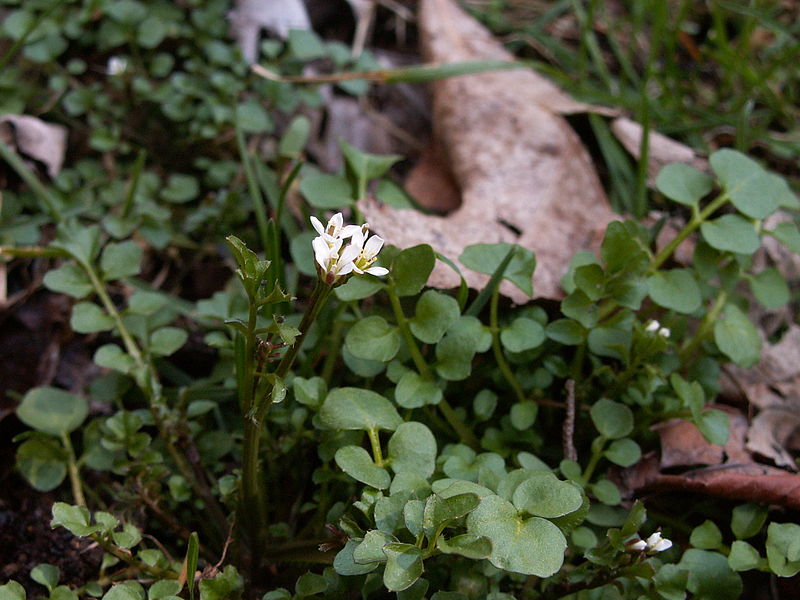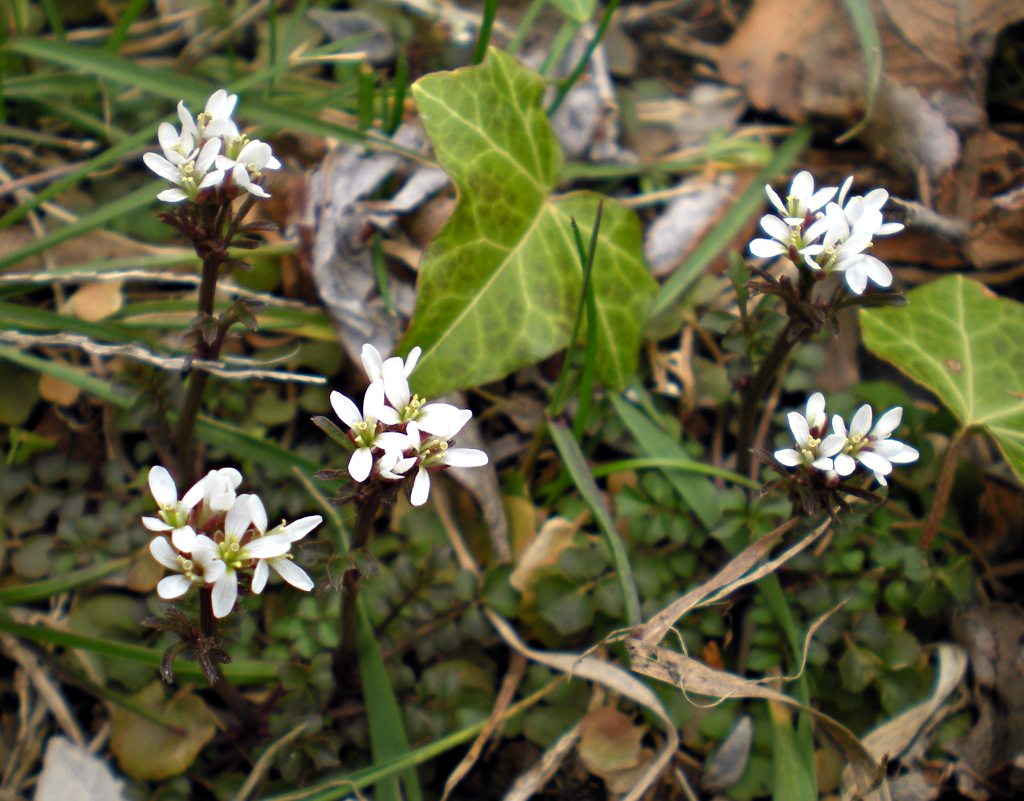
Depending on your point of view, this is either an invasive weed or a cheery harbinger of spring. It comes from Europe, and it makes itself at home in our lawns, where it politely refuses to exceed the height of the grass around it. There are people who eat it as a salad herb, so it can’t be all bad. It’s one of the first things to bloom in the spring, appearing along with the crocuses and persisting through daffodil season. This patch was blooming in a lawn in Mount Lebanon in early April.
Gray describes the genus and the species:
CARDÁMINE [Tourn.] L. Bitter Cress. Pod linear, flattened, usually opening elastically from the base; the valves nerveless and veinlees, or nearly so; placentae and partition thick. Seeds in a single row in each cell, wingless; the funiculus slender. Cotyledons accumbent, flattened, equal or nearly so, petiolate.— Mostly glabrous perennials, leafy-stemmed, growing along watercourses and in wet places. Flowers white or purple. (A Greek name, used by Dioscorides for some cress, from its cordial or cardiacal qualities.)
Root mostly biennial or annual; leaves pinnately 5-11-foliolate, flowers small, white.
Stamens 4; leaflets strigose-hispid upon the upper surface.
С. hirsuta L. Leaves chiefly radical, with short and broad leaflets, but those on the erect stem reduced and with narrow leaflets; pods erect, on ascending or appressed pedicels. — Moist places, s. Pa. to N. C, and “Mich.” (Eu.) Perhaps introduced. A doubtful specimen from w. Mass. (Miss Vail).


